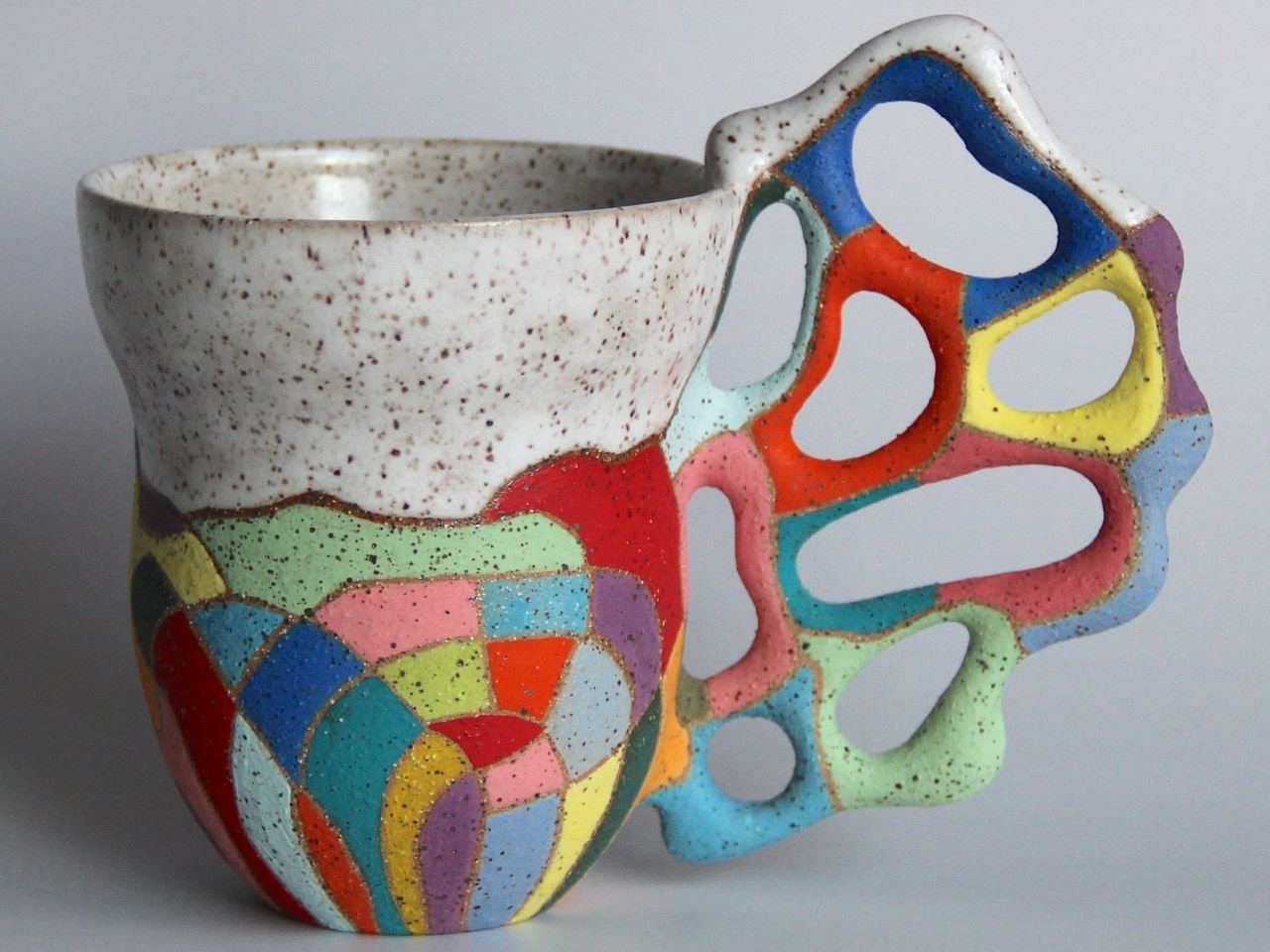Ceramics have been around for thousands of years, originally crafted by hand. With industrialization, ceramics became mass-produced and ingrained in our daily lives. Today, ceramics are an incredibly versatile material, with ongoing innovations expanding their uses across various applications.
Advances in technology have not only enhanced the properties of ceramics but also streamlined production processes, making them more efficient and accessible. Manufacturing has significantly improved, reducing production time. Automated processes have evolved within the ceramic industry, leading to advancements in design applications across fields like ceramic art, interior design, and bioceramics in medical science.
Ceramic Art
Ceramic art has evolved significantly, expanding its creative horizons far beyond traditional glazes and coloring oxides. Artists now employ a diverse palette of pigments, allowing for more vibrant and precise color applications. Recent trends in the field have embraced mixed media, integrating materials like wood, glass, and metal into ceramic works. This fusion of mediums results in captivating three-dimensional pieces that emphasize organic shapes and imperfections, celebrating the unique handmade qualities with earthy tones.
Sustainability has become a central focus in modern ceramic art, with many artists incorporating recycled materials into their creations. This environmentally conscious approach is complemented by minimalist designs, bold patterns, and functional art pieces where form follows function. The rise of 3D printing technology has also opened new avenues for innovation, enabling artists to explore intricate designs that were previously unattainable. These advancements reflect the dynamic evolution of ceramic art, as it continues to push creative boundaries.
Jessica Thompson-Lee, a ceramic artist and educator based in Brooklyn, New York, is reshaping the world of ceramics with her unique approach to form and function. Her work explores the tactile and visual experience of ceramics, inviting touch and interaction. Inspired by organic forms like coral reefs and mycelium, her pieces feature biomorphic designs that seem alive with movement. For example, the handles on her mugs stretch and sprawl like organic extensions.
Thompson-Lee’s creative process blends spontaneity with precision, creating playful and unconventional ways to hold each piece. She begins by “sketching with clay,” using liquid clay for designs before transitioning to hand-building and carving intricate handles. After firing, she adds patterns and vibrant glazes to transform each piece into art. Each curve invites playful interaction with the object, turning it into a memorable sensory experience.
Interior Design
Ceramics are widely used in interior design for tiles, sanitary products, knobs, and creative installations. Digital printing has revolutionized tile design by offering incredible possibilities. Modern printing precision allows tiles to replicate the natural appearance of materials like stone and wood with stunning realism. This innovation has expanded pattern options to include unique finishes like metallic tiles.
Ceramic sanitary ware finds applications in bathrooms because it’s non-porous, easy to clean, and helps prevent odors from building up inside WC areas. Ceramic knobs have been classic choices for centuries due to their durability and aesthetic appeal; today they come in vibrant colors offering both functionality and decorative value.
Created by Turkish bathroom brand VitrA, the Recycled Ceramic Washbasin is a minimalist, beautifully crafted fixture made from nearly 100% recycled materials which primarily include discarded ceramics from the company’s production processes. Designed with environmental sustainability in mind, this washbasin abides by the principles of circular manufacturing which turns waste into a valuable resource as these materials that would otherwise be discarded. They are reclaimed and transformed into something new.
The washbasin comes in five shapes: Pebble Square Circle Oval TV—all made from textural taupe-colored clay complementing various bathroom styles seamlessly while featuring eco-friendly sleek minimal aesthetics enhancing beauty rather than detracting from bathrooms’ ambiance; its compact ergonomic size fits efficiently designed spaces perfectly making it ideal choice well-curated bathrooms.
Bio-Ceramics
Bio-ceramics have become an integral part of dentistry and medicine, offering innovative solutions for replacing damaged tissues in bones and teeth. Their biocompatibility ensures they do not harm the body, making them ideal for medical applications. Popular types such as alumina, zirconia, and hydroxyapatite are favored for their mechanical properties that closely mimic human bone. These materials are broadly classified into bioactive ceramics, which bond directly with tissue and degrade slowly, and bio-inert ceramics, which remain stable without chemical interaction with surrounding areas.
Beyond their medical uses, bio-ceramics are also being explored in sustainable construction. They offer a promising alternative due to their durability and environmentally friendly properties. In building homes, these materials can provide structural support while minimizing environmental impact. The unique qualities of bio-ceramics—such as their ability to integrate seamlessly with natural elements—make them a valuable resource in developing eco-friendly living spaces that prioritize sustainability without compromising on strength or function.
CArrelé is a collection of high-performance bio-ceramic tiles made from eggshell fragments and binding agents. What sets eggshells apart is their renewable, bio-ceramic properties, which make them a unique alternative to traditional ceramics. Elaine Yan Ling Ng, Chief Innovator at Nature Squared, recognized the potential of eggshell scraps and transformed them into innovative tiles. Unlike conventional ceramics, eggshells naturally absorb carbon dioxide, acting as a decarbonating filter for industrial gases.
Sourced from local bakeries and kitchens in the Philippines, the eggshells are crushed into fragments, ranging from sand-sized grains to three millimeters, creating a speckled, terrazzo-like appearance. These fragments are combined with binding agents and molded into various tile shapes, which are then cured at room temperature. Nature Squared uses a range of dyeing techniques to create color gradients, including toasting the eggshells for earthy browns or using natural dyes like indigo and madder. Inspired by the medical industry’s use of eggshells for their calcium-rich durability, CArrelé tiles are ideal for high-traffic areas like kitchen backsplashes and bathroom walls.
Industrial Product Design
In industrial product design, ceramics are celebrated for their dual functional and aesthetic benefits. Textured ceramics bring a distinct visual appeal, often used in insulators and electronic components due to their non-conductive properties. This makes them ideal for applications where electrical isolation is critical. Additionally, ceramics can withstand high temperatures, making them a preferred choice for heating and cooking products. Their robustness ensures reliability and efficiency in environments demanding thermal resilience.
Ceramics also play an essential role in advancing renewable energy technologies. They are instrumental in producing high-purity glass for premium solar panels, enhancing energy capture and efficiency. In wind turbines, ceramic components contribute to durability and performance under harsh conditions. Moreover, ceramic-coated appliances are prized for their resistance to abrasion and chemical inertness, ensuring longevity and maintaining functionality over time. This combination of properties makes ceramics indispensable in pushing the boundaries of industrial design innovation.
The Pink Robots Won is a ceramic floor lamp that blends both eerie and endearing qualities, making it a unique statement piece in any room. While most lamps serve a functional purpose, this one goes beyond mere illumination, creating a striking visual effect that sparks conversation. With its unusual form that resembles a single eye surrounded by three tentacles or an alien creature on three legs—it evokes a sense of both intrigue and discomfort. The lamp’s design is dynamic, leaving viewers uncertain whether it’s about to topple over or is simply leaning back, inviting them to imagine its story.
Crafted with advanced ceramic techniques, the lamp features an uneven yet balanced design, with soft pastel colors that add a playful touch. These hues soften the inherent fragility of the ceramic, enhancing its whimsical charm. The Pink Robots Won is the perfect conversation piece, infusing any space with personality and intrigue. While it may not provide intense illumination, it will undoubtedly spark the imagination of anyone who encounters it, casting a unique light on both the room and its viewers.
The post Ceramic Trends & Innovation : Exploring it’s Application in the Future of Art and Design first appeared on Yanko Design.

